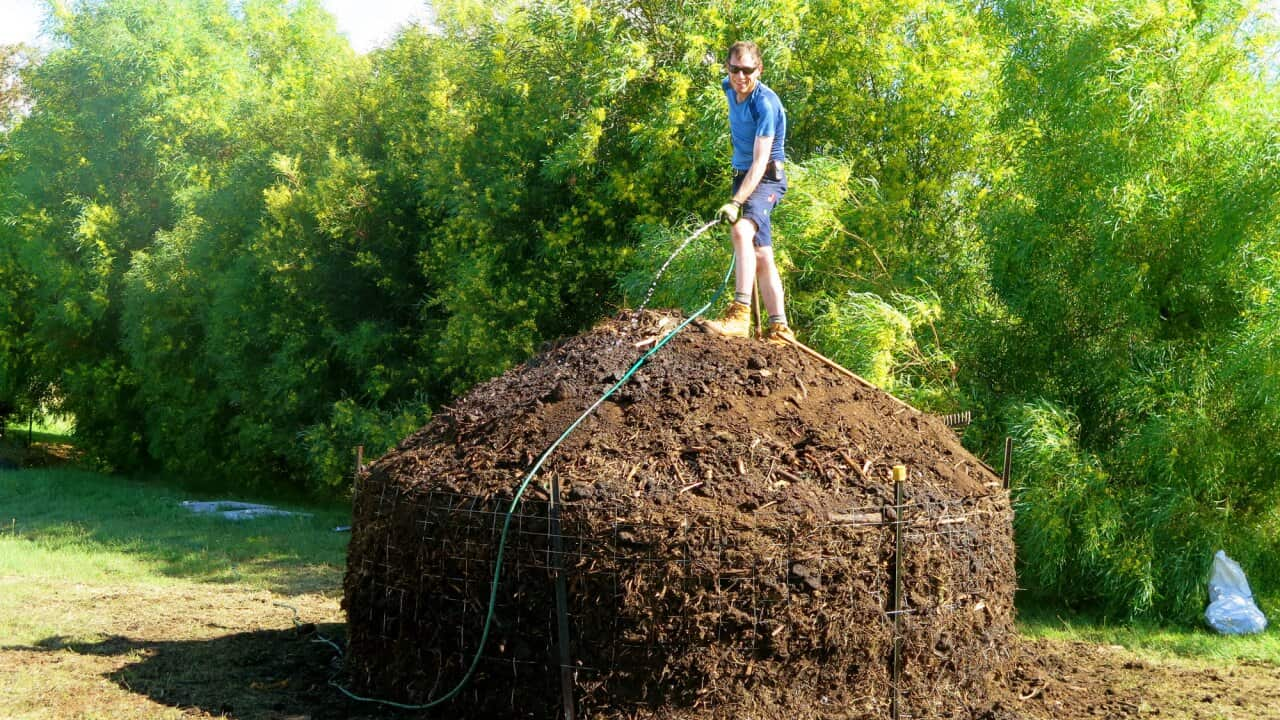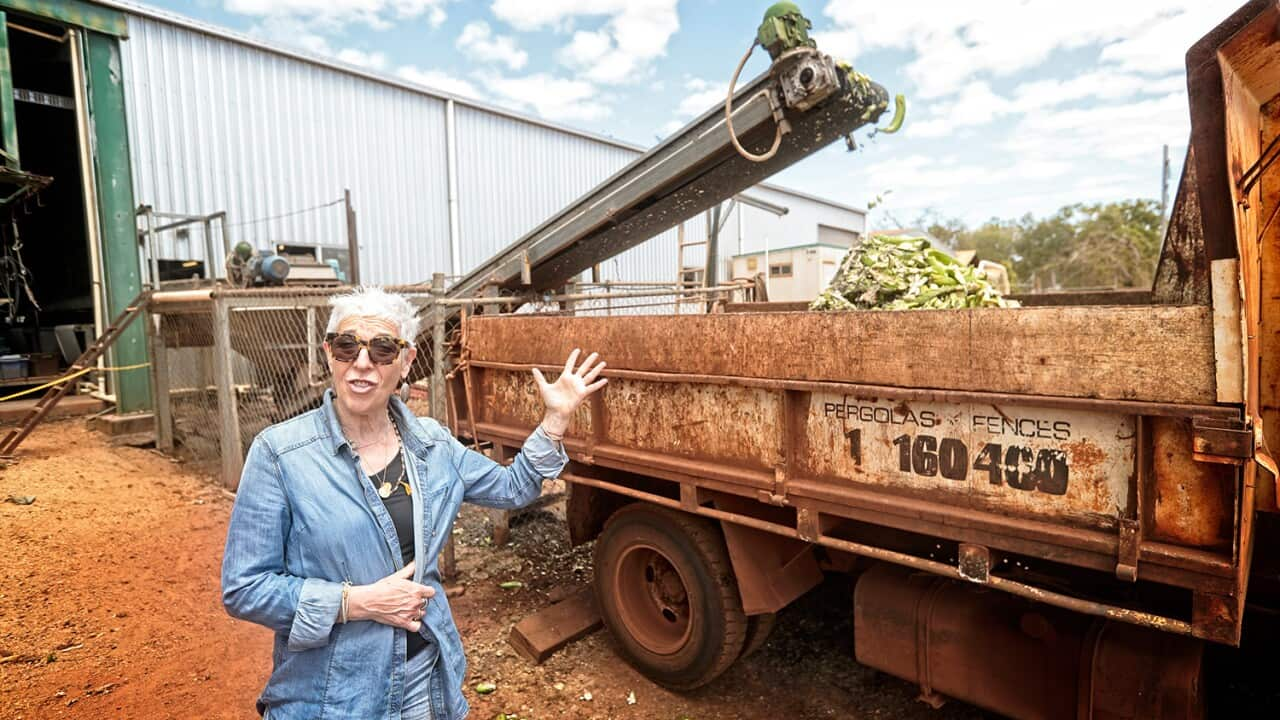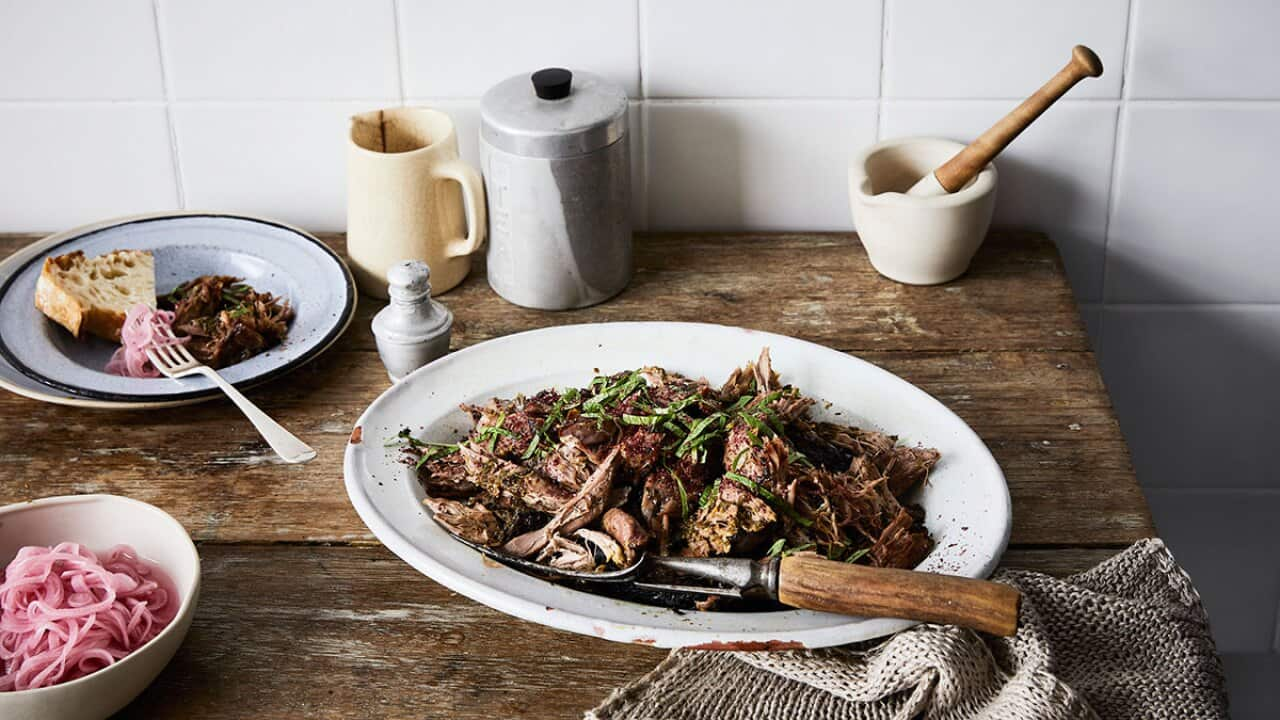There’s nothing so comforting as taking a hot shower during winter to defrost your chilled bones. But how about having a warm, compost shower outdoors instead?
Don’t fret – it doesn’t involve bathing in chicken manure in public. explains, a compost shower is just an environmentally friendly hot-water system.
explains, a compost shower is just an environmentally friendly hot-water system.

In progress: a compost shower being built. (Hannah Moloney) Source: Hannah Moloney
Instead of using electricity to heat the water that comes out of a regular showerhead, a compost shower utilises the heat generated from the biological activity within a large, anaerobic compost pile to heat water.
“The compost pile has 100 metres of the black coiled inside of it,” Lane says on . “The heat generated from the decomposing materials heats the pipe, which goes up to the compost shower,” she says.
, director of in Hobart, has also , using a similar construction method as Fair Harvest Permaculture.
“Once, we were camping at a community garden,” Moloney tells SBS. “We didn’t have a shower available at the time. Our options were to move the whole venue to somewhere where we had a shower or use the experience as an opportunity to make a compost shower. So we chose to make a compost shower, which the group [we were with] used for two weeks.
“It was around 20 cubic metres – about four metres in diameter and over two-to-three metres high.”
Good Life Permaculture’s shower also used poly pipe, which spiralled inside the compost pile.
“Cold water came from the rain tank and travelled through the pipe, through the compost pile and out the tap in the outdoor shower as hot water. The shower is just like a normal shower except the water used goes back into a greywater system.” The used water from the shower was filtered into a set of bathtubs filled with wood chips and covered with cloths and then filtered out into local wetlands.
This compost showering creation sounds ingenious. But how does it smell? “It should smell beautiful and earthy,” says Moloney.
“It should smell beautiful and earthy,” says Moloney.

The process of coiling pipes to make a compost shower. (Hannah Moloney) Source: Hannah Moloney
She adds that a bad-smelling compost pile (for showering purposes) means the balance of carbon and nitrogen-producing ingredients is off.
“A compost pile used for a shower should not be offensive or a health risk at all. If you use too much chicken poo, it can become gross and smelly – but that’s not actually compost. It’s just a stinky pile.”
She stresses that food scraps should not be used in the compost pile. Utilise food waste in your garden by feeding a worm farm or adding it to your vegetable beds.
Why do compost showers exist?
Moloney explains that compost showers were initially created for agricultural reasons in Europe in harsh winters. Farmers who were trying to grow food in a hothouse used the composting technique to generate hot water that would be filtered through pipes placed within the soil to help plants grow in low temperatures. The value-added, low-tech concept that developed, as a result, was the compost shower.
Compost showers, which Moloney says are now more commonly used in winter in the cooler parts of the world, are rare in Australia given our warm weather and the limited need for outdoor showers. “You have to use the compost shower for the right context in the right climate.”
A compost pile used for a shower should not be offensive or a health risk at all. If you use too much chicken poo, it can become gross and smelly – but that’s not actually compost. It’s just a stinky pile.
However, she says, knowing how to build a compost shower is a useful and environmentally friendly skill to have.
“Don’t ever underestimate the power of composting,” she says.
“I’d encourage people to skill up and learn how to make a compost shower. Even if you don’t use the skill every day, you will feel empowered because you can create a compost shower out of wood chips and chook poo. That’s pretty awesome: it’s an awesome life still to learn.”







